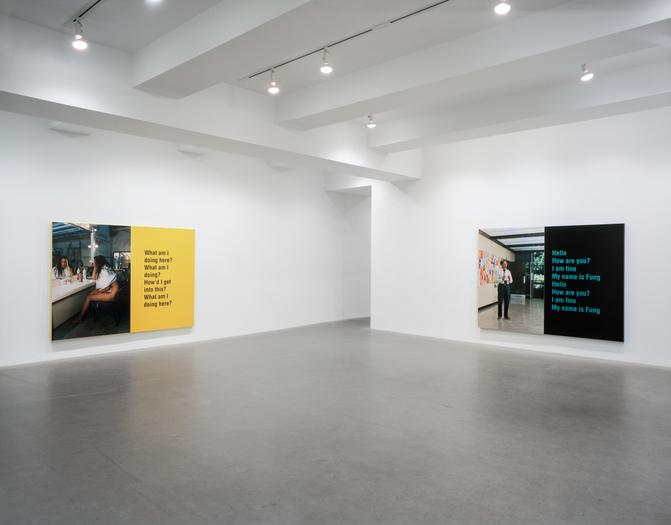Ken Lum
December 2, 1994 – January 14, 1995
Main Gallery
An acquaintance with Lum's library of modern philosophy and art history books might make one more alert to the subtle moves in his pieces, but such knowledge is hardly a prerequisite for understanding, and being deeply affected by, the large photographic prints and printed snatches of language, mounted side-by-side on metal panels.
We know immediately where we are, and what's going on (more or less) in Lum's meticulously staged tableaux of poignant moments. The scene's usually the run-down, down-market side of any modern city: each picture could be a still from the bad B-movie that the denizens of such places live in, day by day.
A biker mama with tattooed arms, more exasperated than worried, has dropped her Safeway bags by a rusted hydro pole on a dirty street, and is thinking (so we read on the text-half of the piece): "Oh for crying out loud! Where is he?... Where is that kid of mine?"
We come upon a girl in cheap, too-tight jeans and white spiked heeled boots at a pay phone, yelling at whomever on the other end: "You don't love me! You've never loved me! When have you ever given a shit about me?!" And we find ourselves at the edge of a dilapidated front porch where a plain, miserable-looking guy in work boots is embraced by his little daughter, who's saying: "What is it, Daddy? What's the matter Daddy?"
Seems to me that Mom might be the problem - but that's only one interpretation. Anyway, nailing down what's really happening in this or any other piece here is not the point. What's important is what each detail of Lum's art adds up to: a crisp, precisely focused depiction of the typical, of some little climax in anybody's ordinary experience of living, working, losing, desiring.
While it may seem curious that pictures of matters this ordinary can be so involving, the phenomenon itself is not new. Lum's art gathers strength from the impressionist painters, among the first moderns to see epiphanies in incidents snipped from plain, boring middle-class life. The result of Lum's approach - something he shares with the best social realists and photo-journalists - never drags art down to the banal, rather it makes plain life as arresting as the greatest historical art by exposing the heart of universal pathos, by bringing us back nose-to-nose with the real flawed things we are.
excerpt from an article written by John Bentley Mays for The Globe and Mail, October 15, 1994
